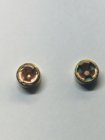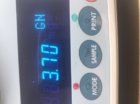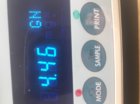Just trying to get a grasp on the stuff above.
I see it as velocity differences of 8 fps would be .26 percent around a velocities of 3100 fps but might cause 3 inches drop variations at 1000 yards (1.5 up & 1.5 down?). Would determination of .26 percent velocity differences require an inordinate amount of chronograph set up uniformity to achieve shot to shot consistency and lacking that uniformity velocity variations would be introduced?
Inconsistent primer ignition (poor primer ignition?) independent of total primer and explosive content weight but yielding closely equal velocities? Would primer pressure wave slopes vary causing bullet acceleration variations but equal muzzle velocities? Some time ago I measured 13 CCI 41 primers and found their average length to be .1217 inches, with a spread of .005 inches, SD = .0015 and using a 95% confidence level the primers would range from .123 max to .121 min for 1,000 population (df). Running the same routine for 50 samples yielded slightly closer max min results. My question now would these minute dimensional differences have an effect on accuracy that would not show up with measuring velocity differences.
I see it as velocity differences of 8 fps would be .26 percent around a velocities of 3100 fps but might cause 3 inches drop variations at 1000 yards (1.5 up & 1.5 down?). Would determination of .26 percent velocity differences require an inordinate amount of chronograph set up uniformity to achieve shot to shot consistency and lacking that uniformity velocity variations would be introduced?
Inconsistent primer ignition (poor primer ignition?) independent of total primer and explosive content weight but yielding closely equal velocities? Would primer pressure wave slopes vary causing bullet acceleration variations but equal muzzle velocities? Some time ago I measured 13 CCI 41 primers and found their average length to be .1217 inches, with a spread of .005 inches, SD = .0015 and using a 95% confidence level the primers would range from .123 max to .121 min for 1,000 population (df). Running the same routine for 50 samples yielded slightly closer max min results. My question now would these minute dimensional differences have an effect on accuracy that would not show up with measuring velocity differences.















